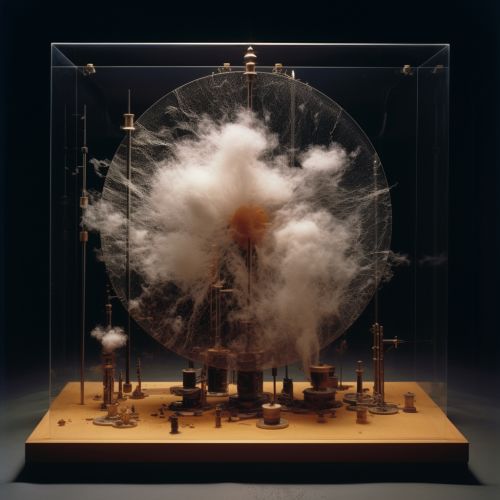Elementary Particles
Introduction
Elementary particles, also known as fundamental particles, are the smallest known building blocks of the universe. These particles are not composed of any other particles and are the basic components of matter and forces. The study of elementary particles falls under the domain of particle physics, a branch of physics that seeks to understand the nature of these particles and how they interact.
Classification of Elementary Particles
Elementary particles are classified into two main types: fermions and bosons. Fermions are particles that follow the Fermi-Dirac statistics and include quarks and leptons. Bosons, on the other hand, follow the Bose-Einstein statistics and are responsible for carrying forces.
Fermions
Fermions are the building blocks of matter and are characterized by their half-integer spin. They obey the Pauli exclusion principle, which states that no two fermions can occupy the same quantum state simultaneously. Fermions are further divided into quarks and leptons.
Quarks
Quarks are elementary particles that carry a fractional electric charge. They are the constituents of hadrons, which include protons and neutrons. There are six types of quarks, known as flavors: up, down, charm, strange, top, and bottom. Each quark flavor comes in three colors: red, green, and blue, a property related to the strong interaction.
Leptons
Leptons are elementary particles that do not undergo strong interactions. They carry an integer electric charge. There are six types of leptons: electron, muon, tau, electron neutrino, muon neutrino, and tau neutrino. The electron, muon, and tau particles carry a negative electric charge, while their corresponding neutrinos are electrically neutral.
Bosons
Bosons are elementary particles that carry forces. They have integer spins and do not obey the Pauli exclusion principle. The four known types of bosons are: photons, gluons, W and Z bosons, and Higgs boson.
Photons
Photons are particles of light and carry the electromagnetic force. They are massless and travel at the speed of light in a vacuum. Photons have a spin of 1 and are responsible for phenomena such as electromagnetic radiation and quantum entanglement.
Gluons
Gluons are the carrier particles of the strong force, which holds quarks together within hadrons. They have a spin of 1 and are massless. Gluons themselves carry the color charge and can interact with each other, a unique property among the force-carrying particles.
W and Z Bosons
W and Z bosons are responsible for the weak interaction, which is responsible for radioactive decay and neutrino interactions. W bosons carry an electric charge and can have a positive or negative charge, while Z bosons are electrically neutral.
Higgs Boson
The Higgs boson is an elementary particle discovered in 2012 at the Large Hadron Collider. It is associated with the Higgs field, a field of energy that permeates the universe and gives other elementary particles their mass.


Interactions of Elementary Particles
Elementary particles interact with each other through four fundamental forces: gravity, electromagnetism, strong interaction, and weak interaction. These interactions are mediated by the exchange of bosons.
Gravity
Gravity is the weakest of the four fundamental forces and acts between all particles that have mass. It is currently not well described at the quantum level, and the hypothetical particle that mediates gravity, the graviton, has not yet been observed.
Electromagnetism
Electromagnetism acts between particles that carry an electric charge. It is mediated by photons and is responsible for phenomena such as light and electricity.
Strong Interaction
The strong interaction, or strong nuclear force, acts between quarks and is mediated by gluons. It is the strongest of the four forces and is responsible for holding quarks together within protons and neutrons.
Weak Interaction
The weak interaction acts on all types of fermions and is responsible for radioactive decay and neutrino interactions. It is mediated by W and Z bosons.
The Standard Model
The Standard Model of particle physics is a theoretical framework that describes the elementary particles and their interactions. It includes the electromagnetic, weak, and strong forces and all known elementary particles. The Standard Model is highly successful in predicting the behavior of elementary particles, but it does not include gravity and does not explain the nature of dark matter and dark energy.
Beyond the Standard Model
Several theories propose extensions to the Standard Model to address its limitations. These include Supersymmetry, String theory, and Quantum gravity. These theories predict the existence of new elementary particles, but none of these have been observed so far.
